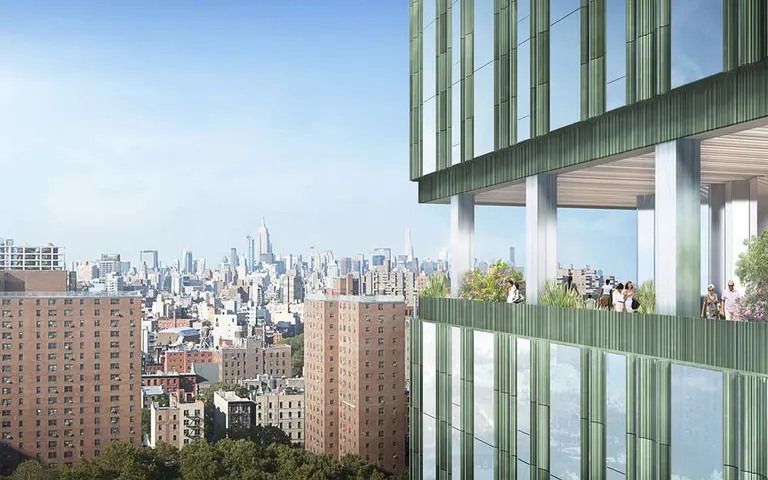Massive Two Bridges projects can move forward without City Council approval

Rendering: SHoP Architects
Three projects that include the construction of four towers and the creation of nearly 3,000 housing units in Two Bridges meet all zoning requirements and can move forward without City Council approval, an appeals court ruled Thursday. The Appellate Division of State Supreme Court reversed a lower court’s ruling that had stopped the Manhattan megaproject from going ahead.
Approved by the City Planning Commission in 2018, the projects include a 77-story tower at 247 Cherry Street developed by JDS Development, two 60-story towers at 260 South Street from L+M Partners and CIM Group, and a 724-foot tall building at 259 Clinton Street from Starrett Corporation. In total, the four towers would yield 2,700 new units of housing, with 25 percent of them affordable.
As 6sqft previously reported, the Department of City Planning determined that because the new buildings would create only a “minor modification” to the neighborhood, the projects were not required to get City Council approval or go through the uniform land use review procedure (ULURP).
Last year, Manhattan Borough President Gale Brewer and the New York City Council filed a lawsuit challenging CPC’s decision, arguing the projects are not allowed under current zoning laws and should go through ULURP.
State Supreme Court Justice Arthur Engoron sided with the petitioners and halted the project earlier this year, ruling the CPC bypassed City Council authority when it approved the three projects.
But in a unanimous decision, the court on Thursday wrote “the buildings described in the applications did not conflict with applicable zoning requirements and that, therefore, the CPC’s approval of the applications has a rational basis and is not contrary to law.”
They wrote that the large-scale residential district (LSRD) proposed and the height of the towers and resulting bulk comply with applicable zoning resolution provisions and a special permit is not required.
“The history of the Two Bridges LSRD site plan, which has been modified at least six times since 1973 without the issuance of a special permit, negates petitioners’ claim that, once a special permit has been issued, a new special permit and ULURP are required for further modifications to a LSRD site plan, even in the absence of a conflict with applicable ZR provisions,” the decision reads.
Two separate lawsuits brought by Lower East Side resident groups remain pending, currently preventing the towers from rising at the site.
In a statement to 6sqft, a spokesperson for the developers said: “We applaud the court’s decision, which makes clear that these projects were lawfully approved and comply with zoning that’s been in place for more than 30 years. Private investments in affordable housing and essential community infrastructure are even more critical as the city emerges from the COVID-19 crisis.”
To mitigate neighborhood impact, the developers have pledged $40 million in upgrades to make the East Broadway station ADA-accessible, $15 million in public park upgrades, and other improvements.
RELATED:
- Judge upholds decision to halt Two Bridges megatowers from rising
- New court ruling may mean more delays for Lower East Side’s Two Bridges megaproject
- Judge halts Two Bridges development temporarily after hearing lawsuits
Editor’s note 8/28/20: This post has been updated to fix imprecise language regarding the appeals court decision. Additional lawsuits have been brought against the projects that remain pending, preventing the development from going ahead.























